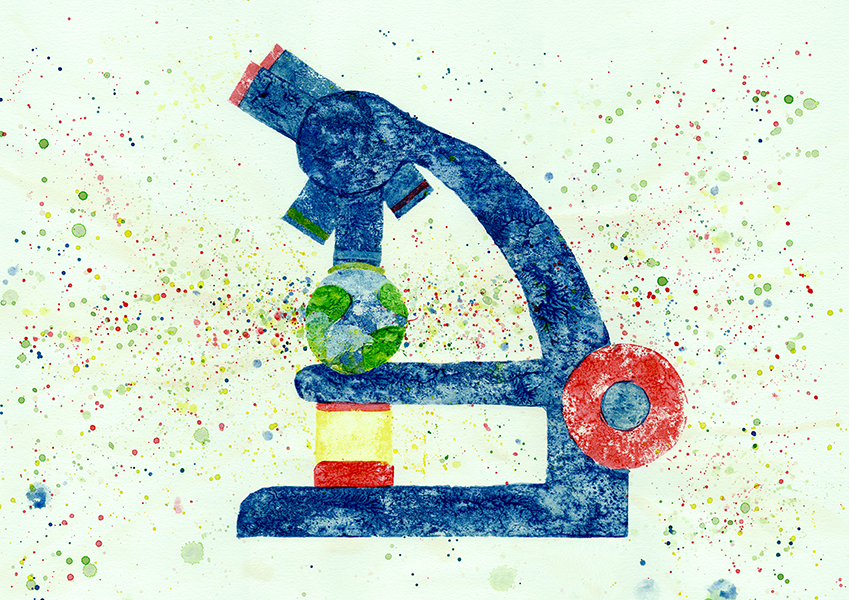Every year on the first Friday of August, beer lovers around the world gather to celebrate International Beer Day. Pubs pour, friends clink glasses, and breweries showcase their craft. But behind every pint, there’s an unassuming hero at work: yeast. This International Beer Day, let’s go beyond just raising a glass. In this blogpost, Nurdana Orynbek shines a light on the science and the surprising versatility of the microorganisms that make beer possible.
Beer fermentation relies primarily on Saccharomyces cerevisiae, which converts fermentable sugars in wort into ethanol and carbon dioxide, while also synthesizing secondary metabolites such as esters, higher alcohols, and glycerol. These compounds contribute significantly to the sensory characteristics of beer, influencing aroma, depth, and mouthfeel (Silva et al., 2024).
Yeast physiology during fermentation is complex. Cells must adapt to rising ethanol concentrations, nutrient depletion, and osmotic stress. Studies mapping genetic and regulatory responses have provided insight into how yeast maintains metabolic activity under these demanding conditions (Silva et al., 2024; Gorter de Vries et al., 2019). This understanding informs strain selection and process optimization, enabling brewers to achieve greater efficiency and consistency.
While S. cerevisiae remains the cornerstone of brewing, non-traditional yeasts are increasingly recognized for their ability to diversify beer profiles. Among these, Torulaspora delbrueckii has garnered attention for its distinctive fermentation traits. Recent research demonstrates that T. delbrueckii generates lower levels of acetic acid, mitigating sharp or vinegary notes, while increasing glycerol and succinate production, which contribute to a fuller mouthfeel and softer acidity. Traditionally associated with winemaking, these properties are now being utilized to produce beers with enhanced balance and complexity (Daute et al., 2024). Certain strains also enrich aromatic complexity by increasing ester and higher alcohol synthesis, without overwhelming the sensory profile (Vaštík et al., 2022).
Other species, such as Lachancea thermotolerans and Pichia kluyveri, are now being studied for their ability to craft beers with lower ethanol levels or distinct aromatic characteristics, meeting the growing demand for innovative and health-conscious options (Vaštík et al., 2022).
Some interesting facts on Brewing Innovation:
- Yeasts actively shape the sensory identity of beer through metabolite production, influencing aroma, texture, and balance (Silva et al., 2024).
- Genetic responses to ethanol and nutrient stress are informing the selection of more robust, efficient strains (Gorter de Vries et al., 2019\).
- Hybrid lager yeast (Saccharomyces pastorianus) originated from S. cerevisiae × S. eubayanus hybridization in the 17th century, a finding that guides modern breeding (Hutzler et al., 2023).
- Genes such as RIM101 and VPS36 have been linked to yeast’s ability to settle and clarify beer, improving reusability and product stability (Zhou et al., 2021).
- Hybridization and genome-assisted selection are allowing scientists to develop strains with tailored aromatic output, ethanol tolerance, and fermentation speed (Gibson et al., 2017).
For brewers, scientific insights translate into better control over fermentation, flavor, and product consistency. Non-Saccharomyces yeasts offer new pathways for sensory innovation, reduced off-flavors, lower-alcohol formulations, and more sustainable production. The science emerging from studies such as those in FEMS Yeast Research not only deepens understanding but fuels innovation, ensuring beer remains as dynamic as the organisms that create it.
This International Beer Day, we raise a glass to yeast – the foundation of brewing and a continuing source of scientific discovery
About the Author:
Nurdana Orynbek holds a Bachelor’s degree in Life Sciences with a major in Chemistry and Biology from the Université de Strasbourg, France. She completed an Erasmus Mundus Joint Master’s degree in Biological and Chemical Engineering for Sustainable Bioeconomy at the universities of Reims Champagne-Ardenne, AgroParisTech (France), and Liège (Belgium). Her research focused on yeast-based biotechnological production of aroma compounds from agro-industrial residues. She conducted her Master’s thesis at the University of Natural Resources and Life Sciences (BOKU) in Vienna, investigating microbial strategies for acetate production from industrial by-products with potential for CO₂ fixation. Currently, she is a PhD researcher at the Technical University of Vienna, working on microbial lipid production for sustainable industrial applications.
References:
Arthur R Gorter de Vries, Jack T Pronk, Jean-Marc G Daran, Lager-brewing yeasts in the era of modern genetics, FEMS Yeast Research, Volume 19, Issue 7, November 2019, foz063, https://doi.org/10.1093/femsyr/foz063
B. Gibson, J.-M. A. Geertman, C. T. Hittinger, K. Krogerus, D. Libkind, E. J. Louis, F. Magalhães, J. P. Sampaio, New yeasts—new brews: modern approaches to brewing yeast design and development, FEMS Yeast Research, Volume 17, Issue 4, June 2017, fox038, https://doi.org/10.1093/femsyr/fox038
Flávia Silva-Sousa, Bruna Oliveira, Ricardo Franco-Duarte, Carole Camarasa, Maria João Sousa, Bridging the gap: linking Torulaspora delbrueckii genotypes to fermentation phenotypes and wine aroma, FEMS Yeast Research, Volume 24, 2024, foae034, https://doi.org/10.1093/femsyr/foae034
Martina Daute, Frances Jack, Graeme Walker, The potential for Scotch Malt Whisky flavour diversification by yeast, FEMS Yeast Research, Volume 24, 2024, foae017, https://doi.org/10.1093/femsyr/foae017
Mathias Hutzler, John P Morrissey, Andreas Laus, Franz Meussdoerffer, Martin Zarnkow, A new hypothesis for the origin of the lager yeast Saccharomyces pastorianus, FEMS Yeast Research, Volume 23, 2023, foad023, https://doi.org/10.1093/femsyr/foad023
Peter Vaštík, Zuzana Rosenbergová, Katarína Furdíková, Tatiana Klempová, Michal Šišmiš, Daniela Šmogrovičová, Potential of non-Saccharomyces yeast to produce non-alcoholic beer, FEMS Yeast Research, Volume 22, Issue 1, 2022, foac039, https://doi.org/10.1093/femsyr/foac039
Xuefei Zhou, Jingyi Suo, Chunfeng Liu, Chengtuo Niu, Feiyun Zheng, Qi Li, Jinjing Wang, Genome comparison of three lager yeasts reveals key genes affecting yeast flocculation during beer fermentation, FEMS Yeast Research, Volume 21, Issue 4, June 2021, foab031, https://doi.org/10.1093/femsyr/foab031
